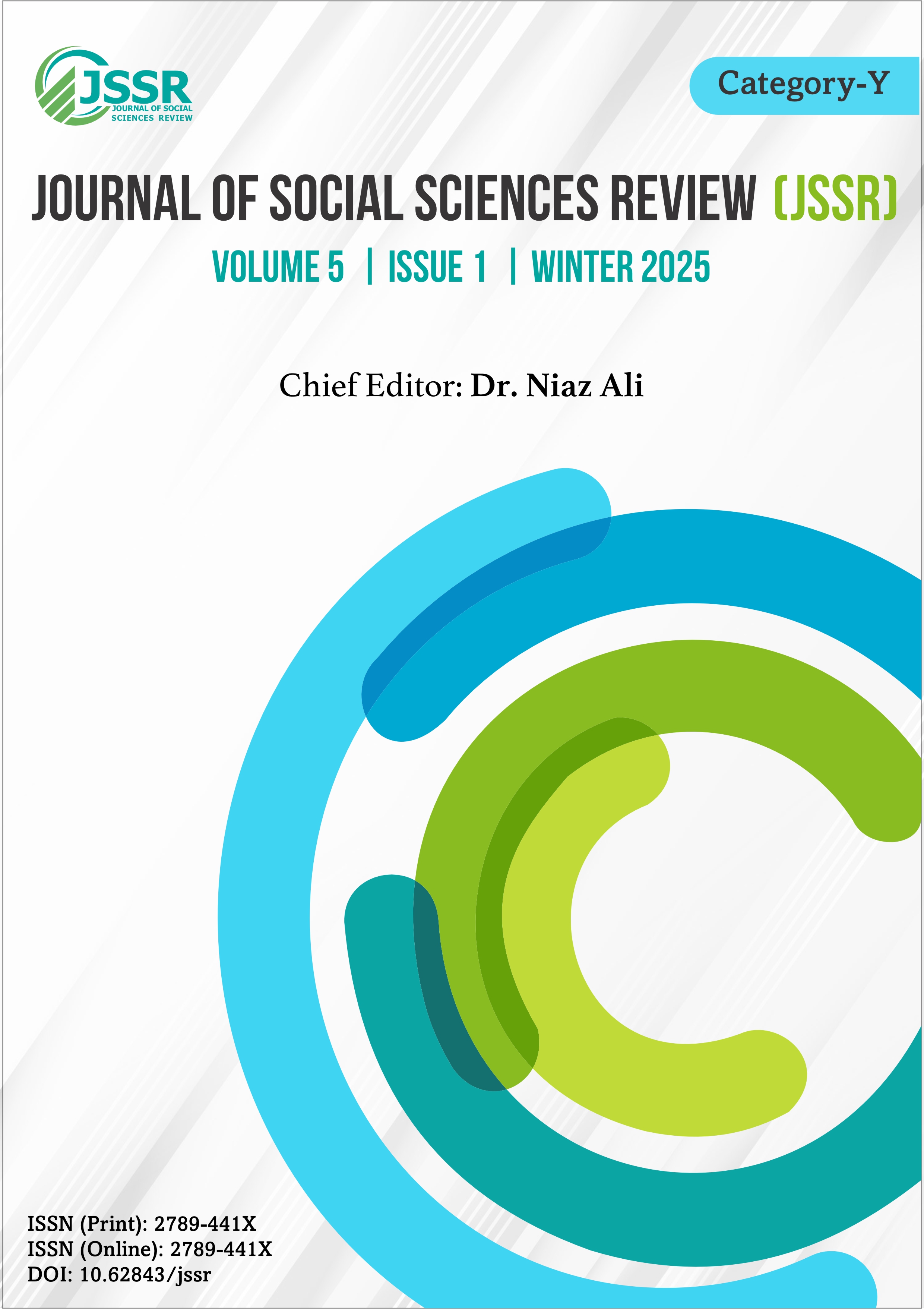Soviet Nuclear Strategy during the Cold War: A Realist Perspective
DOI:
https://doi.org/10.62843/jssr.v5i1.470Keywords:
Nuclear Strategy, Arms Control, Anarchical Structure, Security DilemmaAbstract
A deep ideological conflict that was latent but manifested in indirect conflicts in the areas strategically important to two major powers and an arms race marked the global political landscape in the era of what the world calls the "Cold War". Formulating and executing nuclear strategies was a significant factor in this conflict. The Soviet nuclear strategy, which evolved and altered with time according to the security threat its competitor posed, can be analyzed from the theoretical perspective of realism. This paper analyses the nature and evolution of the Soviet nuclear strategy by comparing the empirical manifestation of nuclear strategy in different periods with the tenets of this theoretical perspective. By scrutinizing the persistent and alternating themes in the evolution of Soviet nuclear strategy, this paper critically examines them with a lens that focuses on the survival and security of the state in an anarchical structure of international relations.
References
Allison, G. T. (1971). Essence of Decision: Explaining the Cuban Missile Crisis. Boston: Little, Brown and Company.
Garthoff, R. L. (2004). The US Role in Winding Down the Cold War, 1980–90. In The Last Decade of the Cold War (pp. 171-184). Routledge.
Garthoff, R. (1994). Detente and Confrontation: American-Soviet Relations from Nixon to Reagan, revised edition. Brookings Institution Press.
Earle, E. M. (1946). The Absolute Weapon; Atomic Power and World Order, Bernard Brodie. American Political Science Review, 40(4), 789–790.
Earle, E. M. (1946). The Absolute Weapon; Atomic Power and World Order. By Frederick S. Dunn, Bernard Brodie, Arnold Wolfers, Percy E. Corbett, and William T. R. Fox. Edited by Bernard Brodie. New York: Harcourt, Brace and Company.
Freedman, L. (2003). The Evolution of Nuclear Strategy. New York: Palgrave Macmillan.
Gaddis, J. L. (2005). The Cold War: A New History. Penguin Press.
Haglund, D. G. (2004). What Good is Strategic Culture?: A Modest Defence of an Immodest Concept. International Journal, 59(3), 479-502. https://doi.org/10.1177/002070200405900302
Jervis, R. (1984). The illogic of American nuclear strategy. Cornell University Press.
Kissinger, H. A. (1994). Diplomacy. New York: Simon & Schuster.
Lebow, R. N. (1981). Between peace and war: The nature of international crisis. Johns Hopkins University Press.
Lebow, R. N. (1996). Thomas Schelling and strategic bargaining. International Journal, 51(3), 555–576. https://doi.org/10.1177/002070209605100308
Mearsheimer, J. (2003). The Tragedy of Great Power Politics. W. W. Norton.
Sagan, S. D. (1993). The Perils of Proliferation: Organization Causes and the Spread of Nuclear Weapons. International Security, 18(4), 66–107. https://muse.jhu.edu/article/447097
Schelling, T. C. (1966). Arms and Influence. New Haven: Yale University Press.
Waltz, K. N. (1979). Theory of International Politics. McGraw-Hill.
Downloads
Published
Issue
Section
License
Copyright (c) 2025 Copyright in the Journal of Social Sciences Review is retained by the author(s). Authors also grant any third party the right to use the article freely as long as its integrity is maintained and its original authors, citation details and publisher are identified.

This work is licensed under a Creative Commons Attribution-NonCommercial 4.0 International License.
SSR's Editorial Board shares the vision of providing free access to information, education, and science for everyone, thus promoting its content through an OPEN ACCESS POLICY, fulfilling the DOAJ definition of open access. The JSSR adheres to an Open Access and Copyright Licensing Policy based on the belief that making research freely accessible to the public promotes greater global knowledge sharing.
The JSSR uses the Creative Commons Attribution-NonCommercial 4.0 International License. The authors who apply and publish in JSSR consent to abide by the copyright policy set out in the Creative Commons 4.0 license (Attribution-NonCommercial 4.0 International license).
- Copyright in the Journal of Social Sciences Review is retained by the author(s).
- Authors also grant any third party the right to use the article freely as long as its integrity is maintained and its original authors, citation details and publisher are identified.
While "By 'open access' to this literature, we mean its free availability on the public internet, permitting any users to read, download, copy, distribute, print, search, or link to the full texts of these articles, crawl them for indexing, pass them as data to software, or use them for any other lawful purpose, without financial, legal, or technical barriers other than those inseparable from gaining access to the internet itself."



